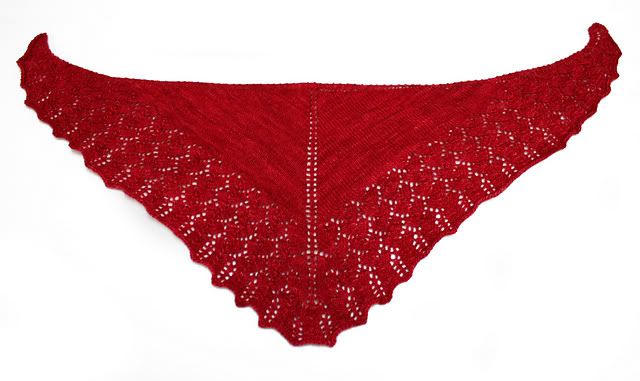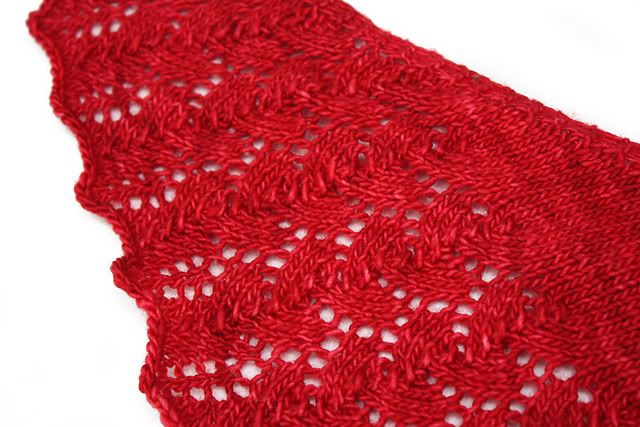My previously mentioned Rhinebeck skirt was Lanesplitter. Claire and I both decided to use Lion Brand Amazing as an economical (and softer) alternative to Noro. While she opted for the neutral browny Cobblestone, I went straight for Roses, a bright tonal variation of reds, burgundies, and pinks. I mostly followed the pattern as written, although I have lazily avoided inserting the elastic so far. I've worn it twice with no wardrobe malfunctions, though, so I'm pretty happy! If I had to do it over again, I would use a provisional cast on. To do this, simple cast on the number of stitches for the diagonal width you wish to achieve. Since you're working on the bias, you would work increases on one side and decreases on the other (as for the main body section). When the skirt fits around you, simply graft it to your provisional cast on. Bam, you've got a seamless skirt! Added bonus: your color changes won't be as obvious at the cast on/bind off edges. I definitely see myself making another of these in the near future (perhaps in my other color obsession, green). At any rate, here's my finished skirt (photographed at Webs):




So pretty! And thanks for the blocking tip - I'll remember that when I make my Ishbel. I have to remember to get a good picture of my Snapdragon mitts, not try when it's 10 o'clock at night!
ReplyDeleteI'm partway through the first cuff. I haven't been knitting much at home since it's been too cold, but my heat FINALLY came on an hour ago!
ReplyDelete